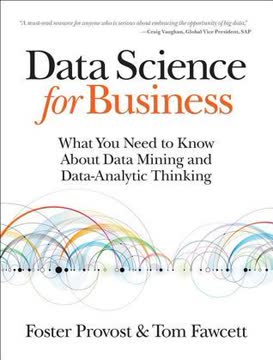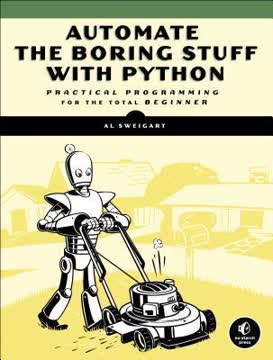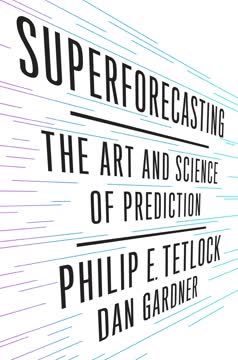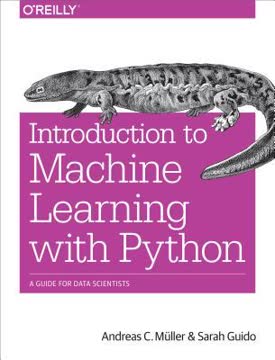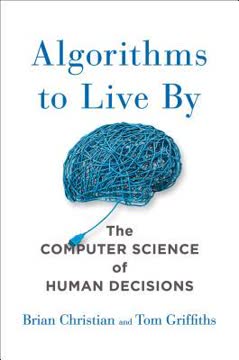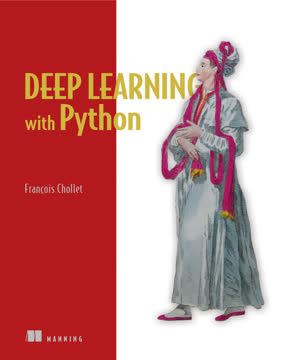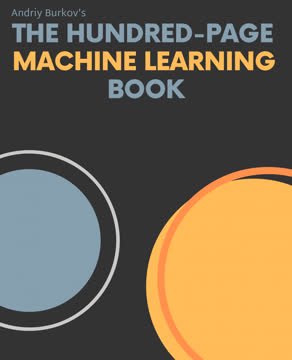نکات کلیدی
1. مبانی یادگیری ماشین: یادگیری تحت نظارت و یادگیری بدون نظارت
یادگیری ماشین جایی است که مهارتهای محاسباتی و الگوریتمی علم داده با تفکر آماری علم داده تلاقی میکند و نتیجه آن مجموعهای از رویکردها برای استنتاج و کاوش دادهها است که بیشتر به محاسبات مؤثر مربوط میشود تا نظریه مؤثر.
یادگیری تحت نظارت شامل مدلسازی روابط بین ویژگیهای ورودی و خروجیهای برچسبگذاری شده است. این نوع یادگیری شامل وظایف طبقهبندی است که هدف آن پیشبینی دستههای گسسته و وظایف رگرسیون است که به پیشبینی مقادیر پیوسته میپردازد. به عنوان مثال، پیشبینی قیمت مسکن یا طبقهبندی ایمیلها به عنوان هرزنامه.
یادگیری بدون نظارت بر کشف الگوها در دادههای بدون برچسب تمرکز دارد. تکنیکهای کلیدی شامل:
- خوشهبندی: گروهبندی نقاط داده مشابه
- کاهش ابعاد: سادهسازی دادههای پیچیده در حالی که اطلاعات اساسی حفظ میشود
این مفاهیم بنیادی، پایه و اساس یادگیری ماشین را تشکیل میدهند و چارچوبی برای مقابله با چالشهای مختلف تحلیل دادهها فراهم میکنند.
2. Scikit-Learn: کتابخانهای قدرتمند برای یادگیری ماشین در پایتون
Scikit-Learn مجموعهای از ابزارهای کارآمد برای یادگیری ماشین و مدلسازی آماری از جمله طبقهبندی، رگرسیون، خوشهبندی و کاهش ابعاد را از طریق یک رابط کاربری یکسان در پایتون ارائه میدهد.
طراحی API یکسان باعث میشود که Scikit-Learn کاربرپسند و کارآمد باشد. این کتابخانه الگوی یکنواختی را برای تمام مدلهای خود دنبال میکند:
- انتخاب یک کلاس و وارد کردن آن
- ایجاد نمونهای از کلاس با هایپرپارامترهای مورد نظر
- تطبیق مدل با دادههای شما
- اعمال مدل بر روی دادههای جدید
این روند استاندارد به کاربران این امکان را میدهد که به راحتی بین الگوریتمهای مختلف بدون تغییرات قابل توجه در کد جابجا شوند. Scikit-Learn همچنین به طور یکپارچه با سایر کتابخانههای علمی پایتون مانند NumPy و Pandas ادغام میشود و آن را به ابزاری چندمنظوره برای پروژههای علم داده تبدیل میکند.
3. نمایش داده و پیشپردازش در Scikit-Learn
بهترین راه برای فکر کردن به دادهها در Scikit-Learn، در قالب جداول داده است.
فرمتبندی صحیح دادهها برای یادگیری ماشین مؤثر بسیار حیاتی است. Scikit-Learn انتظار دارد که دادهها در یک فرمت خاص باشند:
- ماتریس ویژگیها (X): ساختار شبیه به آرایه 2 بعدی با شکل [n_samples, n_features]
- آرایه هدف (y): آرایه 1 بعدی با طول n_samples
مراحل پیشپردازش معمولاً شامل:
- مدیریت دادههای گمشده از طریق تخمین
- مقیاسبندی ویژگیها به یک دامنه مشترک
- کدگذاری متغیرهای دستهای
- انتخاب ویژگی یا کاهش ابعاد
Scikit-Learn ابزارهای مختلفی برای این وظایف پیشپردازش ارائه میدهد، مانند SimpleImputer برای دادههای گمشده و StandardScaler برای مقیاسبندی ویژگیها. پیشپردازش صحیح اطمینان میدهد که الگوریتمها به طور بهینه عمل کنند و نتایج قابل اعتمادی تولید کنند.
4. انتخاب مدل و تکنیکهای اعتبارسنجی
یک مدل تنها به اندازه پیشبینیهایش خوب است.
اعتبارسنجی متقابل یک تکنیک حیاتی برای ارزیابی عملکرد مدل و جلوگیری از بیشبرازش است. این فرآیند شامل:
- تقسیم دادهها به مجموعههای آموزشی و آزمایشی
- آموزش مدل بر روی دادههای آموزشی
- ارزیابی عملکرد بر روی دادههای آزمایشی
Scikit-Learn ابزارهایی مانند train_test_split برای تقسیمات ساده و cross_val_score برای اعتبارسنجی متقابل k-fold پیشرفته ارائه میدهد. این روشها به:
- برآورد عملکرد مدل بر روی دادههای دیدهنشده
- مقایسه مدلها یا هایپرپارامترهای مختلف
- شناسایی بیشبرازش یا کمبرازش کمک میکنند
علاوه بر این، تکنیکهایی مانند منحنیهای یادگیری و منحنیهای اعتبارسنجی به تجسم عملکرد مدل در اندازههای مختلف مجموعههای آموزشی و مقادیر هایپرپارامترها کمک میکنند و فرآیند انتخاب مدل را راهنمایی میکنند.
5. مهندسی ویژگی: تبدیل دادههای خام به ورودیهای مفید
یکی از مراحل مهم در استفاده از یادگیری ماشین در عمل، مهندسی ویژگی است — یعنی تبدیل هر اطلاعاتی که درباره مشکل خود دارید به اعدادی که میتوانید برای ساخت ماتریس ویژگی خود استفاده کنید.
مهندسی ویژگی مؤثر میتواند به طور قابل توجهی عملکرد مدل را بهبود بخشد. تکنیکهای رایج شامل:
- ایجاد ویژگیهای چندجملهای برای ضبط روابط غیرخطی
- تقسیم متغیرهای پیوسته به دستههای گسسته
- کدگذاری متغیرهای دستهای با استفاده از کدگذاری یکداغ یا کدگذاری هدف
- استخراج ویژگیهای متنی با استفاده از تکنیکهایی مانند TF-IDF
- ترکیب ویژگیهای موجود برای ایجاد ویژگیهای جدید و معنادار
Scikit-Learn ابزارهای مختلفی برای مهندسی ویژگی ارائه میدهد، مانند PolynomialFeatures برای ایجاد ویژگیهای چندجملهای و تعامل و CountVectorizer یا TfidfVectorizer برای دادههای متنی. هنر مهندسی ویژگی اغلب به دانش دامنه و خلاقیت نیاز دارد تا مرتبطترین اطلاعات را از دادههای خام استخراج کند.
6. بیز ساده: الگوریتمهای طبقهبندی سریع و ساده
مدلهای بیز ساده گروهی از الگوریتمهای طبقهبندی بسیار سریع و ساده هستند که اغلب برای مجموعههای داده با ابعاد بسیار بالا مناسب هستند.
رویکرد احتمالی اساس طبقهبندهای بیز ساده را تشکیل میدهد که بر اساس نظریه بیز است. ویژگیهای کلیدی شامل:
- زمانهای آموزش و پیشبینی سریع
- عملکرد خوب با دادههای با ابعاد بالا
- توانایی مدیریت دادههای پیوسته و گسسته
انواع طبقهبندهای بیز ساده:
- بیز ساده گاوسی: فرض میکند که ویژگیها توزیع نرمال دارند
- بیز ساده چندجملهای: مناسب برای دادههای گسسته، اغلب در طبقهبندی متنی استفاده میشود
- بیز ساده برنولی: برای وکتورهای ویژگی دوتایی استفاده میشود
با وجود سادگیشان، طبقهبندهای بیز ساده اغلب عملکرد شگفتانگیزی دارند، به ویژه در وظایف طبقهبندی متنی. آنها به عنوان مبنای عالی عمل میکنند و به ویژه زمانی که منابع محاسباتی محدود هستند، بسیار مفیدند.
7. رگرسیون خطی: پایهای برای مدلسازی پیشبینی
مدلهای رگرسیون خطی نقطه شروع خوبی برای وظایف رگرسیون هستند.
قابلیت تفسیر و سادگی رگرسیون خطی را به انتخابی محبوب برای بسیاری از وظایف مدلسازی پیشبینی تبدیل میکند. مفاهیم کلیدی شامل:
- حداقل مربعات معمولی (OLS) برای یافتن خط بهترین برازش
- رگرسیون خطی چندگانه برای مدیریت چندین ویژگی ورودی
- تکنیکهای منظمسازی مانند رگرسیون لاسو و ریج برای جلوگیری از بیشبرازش
رگرسیون خطی به عنوان یک بلوک سازنده برای مدلهای پیچیدهتر عمل میکند و مزایایی از جمله:
- تفسیر آسان اهمیت ویژگیها
- زمانهای آموزش و پیشبینی سریع
- پایهای برای درک تکنیکهای رگرسیون پیشرفتهتر را ارائه میدهد
در حالی که در ضبط روابط غیرخطی محدود است، رگرسیون خطی میتواند از طریق ویژگیهای چندجملهای یا رگرسیون تابع پایه برای مدلسازی الگوهای پیچیدهتر در دادهها گسترش یابد.
آخرین بهروزرسانی::
FAQ
What's Python Data Science Handbook about?
- Comprehensive Guide: Python Data Science Handbook by Jake VanderPlas is a thorough introduction to data science using Python, focusing on essential tools and techniques for data analysis, machine learning, and visualization.
- Key Libraries: It covers crucial libraries like NumPy, Pandas, Matplotlib, and Scikit-Learn, providing practical examples and code snippets to help readers apply data science methods.
- Interdisciplinary Skills: The book emphasizes the interdisciplinary nature of data science, combining statistical knowledge, programming skills, and domain expertise.
Why should I read Python Data Science Handbook?
- Hands-On Learning: The book adopts a hands-on approach, allowing readers to learn by doing through interactive examples and exercises that reinforce the concepts discussed.
- Wide Range of Topics: It covers topics from basic data manipulation to advanced machine learning techniques, making it a valuable resource for deepening understanding of data science.
- Authoritative Insights: Written by Jake VanderPlas, a respected figure in the data science community, the book provides insights and best practices grounded in real-world applications.
What are the key takeaways of Python Data Science Handbook?
- Data Manipulation Skills: Readers will gain essential skills in data manipulation using Pandas, including data cleaning, transformation, and aggregation techniques.
- Machine Learning Techniques: The book covers various machine learning techniques, such as k-means clustering and support vector machines, with practical implementations using Scikit-Learn.
- Visualization Importance: It emphasizes the importance of data visualization, teaching readers how to effectively communicate insights using Matplotlib and Seaborn.
What are the best quotes from Python Data Science Handbook and what do they mean?
- "Data science is about asking the right questions.": This quote highlights the importance of formulating clear, relevant questions, as the success of data science projects often hinges on the initial inquiry.
- "Visualization is a key part of data analysis.": It underscores the role of visualization in understanding data, as effective visualizations can reveal patterns and insights that might be missed in raw data.
- "Machine learning is a means of building models of data.": This encapsulates the essence of machine learning, suggesting that the goal is to create models that generalize from training data to make predictions on new data.
How does Python Data Science Handbook approach the use of libraries like NumPy and Pandas?
- Library-Specific Chapters: Each library is covered in dedicated chapters, providing in-depth explanations and practical examples of how to use them effectively.
- Focus on Data Manipulation: The book emphasizes data manipulation techniques using Pandas, such as filtering, grouping, and merging datasets.
- Performance Considerations: It discusses performance aspects of using these libraries, helping readers understand when to use specific functions for optimal efficiency.
How does Python Data Science Handbook approach machine learning?
- Supervised vs. Unsupervised Learning: The book distinguishes between these learning types, explaining their respective applications, which is critical for applying machine learning techniques effectively.
- Scikit-Learn Library: It introduces Scikit-Learn as a powerful tool for implementing machine learning algorithms, providing examples of various algorithms, including classification and regression techniques.
- Model Validation: Emphasizes the importance of model validation and selection, teaching techniques like cross-validation to ensure models generalize well to new data.
What is the bias-variance trade-off in machine learning as explained in Python Data Science Handbook?
- Definition: The bias-variance trade-off describes the balance between two types of errors affecting model performance: bias and variance.
- Bias: Refers to error from overly simplistic assumptions, leading to underfitting if the model is too simple.
- Variance: Refers to error from sensitivity to training data fluctuations, leading to overfitting if the model is too complex.
How does Python Data Science Handbook explain feature engineering?
- Crucial Step: Feature engineering is crucial in the machine learning process, involving transforming raw data into meaningful features to improve model performance.
- Common Techniques: Covers techniques like one-hot encoding for categorical variables and polynomial features for capturing non-linear relationships.
- Practical Examples: Provides practical examples and code snippets to illustrate implementation using Python libraries.
What is the role of Scikit-Learn in Python Data Science Handbook?
- Comprehensive API: Scikit-Learn offers a consistent API for implementing machine learning algorithms, making it easier to apply techniques.
- Model Evaluation: Includes tools for model evaluation, such as cross-validation and performance metrics, ensuring robust and reliable models.
- Integration: Integrates well with libraries like NumPy and Pandas, allowing seamless data manipulation and analysis.
How does Python Data Science Handbook address handling missing data?
- NaN and None: Explains how Pandas uses NaN and None to represent missing data, discussing implications for data analysis.
- Handling Methods: Introduces methods like
dropna()to remove missing values andfillna()to replace them, with practical examples. - Clean Data Importance: Emphasizes that handling missing data is crucial for accurate analysis, making these methods essential for effective data science.
What is the significance of PCA in data analysis according to Python Data Science Handbook?
- Dimensionality Reduction: PCA reduces dataset dimensionality while preserving variance, aiding in visualization and analysis.
- Feature Extraction: Helps extract important features from high-dimensional data, improving model performance by reducing noise.
- Visualization: Illustrates how PCA can be used for visualization, allowing plotting of high-dimensional data in two or three dimensions.
How does Python Data Science Handbook explain the concept of support vector machines (SVM)?
- Definition: SVMs are supervised learning algorithms for classification and regression, finding the optimal hyperplane separating classes.
- Maximizing Margin: Aim to maximize the margin between closest points of different classes, leading to better generalization.
- Kernel Trick: Covers the kernel trick, allowing SVMs to handle non-linear decision boundaries by transforming input space.
نقد و بررسی
کتاب راهنمای علم داده با پایتون عمدتاً نظرات مثبتی دریافت کرده و به خاطر رویکرد عملی و توضیحات واضحش در مورد ابزارهای اساسی مانند NumPy، Pandas و Matplotlib ستایش شده است. خوانندگان از عمق مطالب مربوط به دستکاری و تجسم دادهها قدردانی میکنند. فصل یادگیری ماشین به عنوان یک مقدمه خوب در نظر گرفته میشود، هرچند برخی آن را از نظر عمق ناکافی میدانند. این کتاب برای مبتدیان و به عنوان مرجعی برای کاربران با تجربه توصیه میشود. برخی از منتقدان اشاره میکنند که برخی بخشها ممکن است قدیمی شده باشند و چند نفر نیز به کمبود تمرینها و مثالهای واقعی انتقاد کردهاند.
Similar Books

